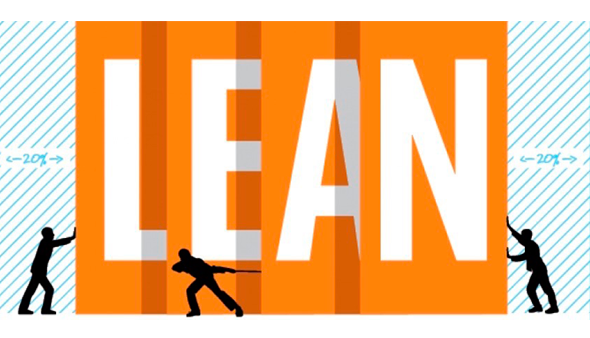Lean service: small renovations for big goals
The concept of lean service which is widely used today in all spheres of our life is rooted in the idea of lean manufacturing. Established in Japan automotive industry, the lean system is based on a systematic approach to the identification of concealed losses in the company and searching for methods to eliminate them. With its emphasis on standardization, product upgrading, cost-cutting and increase of effectiveness, the influence of lean production continues to grow.
Owing to an innovative program at “Toyota” and “Boeing”, the concept of "lean" production” has been implemented in the form of lean service in numerous manufacturing companies and even adapted for such spheres as health care, insurance and banking.
Let’s envisage how such improvements can be brought through lean production concepts to service environment.
Development from the bottom to the top
The service system, differently from the manufacturing field, strongly depends on human factors. While many companies find it difficult to implement the new efficient methods in their work and wrestle against the employee’s inertness, the goal of the lean service is to open the workflow and to cancel the usual hierarchy. Not only eminent members of the team should be involved in the matters of the organization, even general laborer should keep abreast of the issue and be able to get a sense of the overall picture. According to the lean service management stated in the works of the Harvard Business School professor David Upton, the tasks that do not require human intervention should be given to computers, so that people can focus on more important issues. It’s crucially that the mechanization of the processes and development of new programs begin with common departments, in brief-from the bottom to the top.
Visualization
Since service activities are not physically perceptible, for example, banking services, visual management which is a part of lean system is especially useful. The main task is to made invisible work processes visible. Bank of New York in the process of lean service program uses data visualization as a medium of communication. Their access to info- graphic is to simplify the realizing of the content and to let the detail to down to the audience consciousness. They let the data visualization speak for itself in the same time save time and money getting out their message.
Client-centered organization
One of the key aspects of lean service is focus on the customer. Distinct from industry sector, the initial point for selling service is the customer. The insurance company or bank services collaborate with the customer directly on the front court, to the contrary from different industries. Ritually, banks were arranged in a product-focused management with products being promoted directly to the market rather than concentrated on customer needs. Lean service has changed the situation, as the example we can provide the experience of “Capital Finance”, “Capital One Bank” and the insurance company “Vantage Agora Inc”. They managed to change the concept of the company and due to the flow optimization of this service they have succeeded in meeting the customer expectations.
Speaking about lean philosophy there is often skepticism and mistrust whether lean, which originated in the manufacturing world, applies to the financial services industries. Lean is not only about production. Lean service nowadays is the standardization of work processes, is the ability to see the problems and to develop the critical thinking. These approaches at long last will give you possibility to improve the organization process of the company and promoted it to the top flight.



